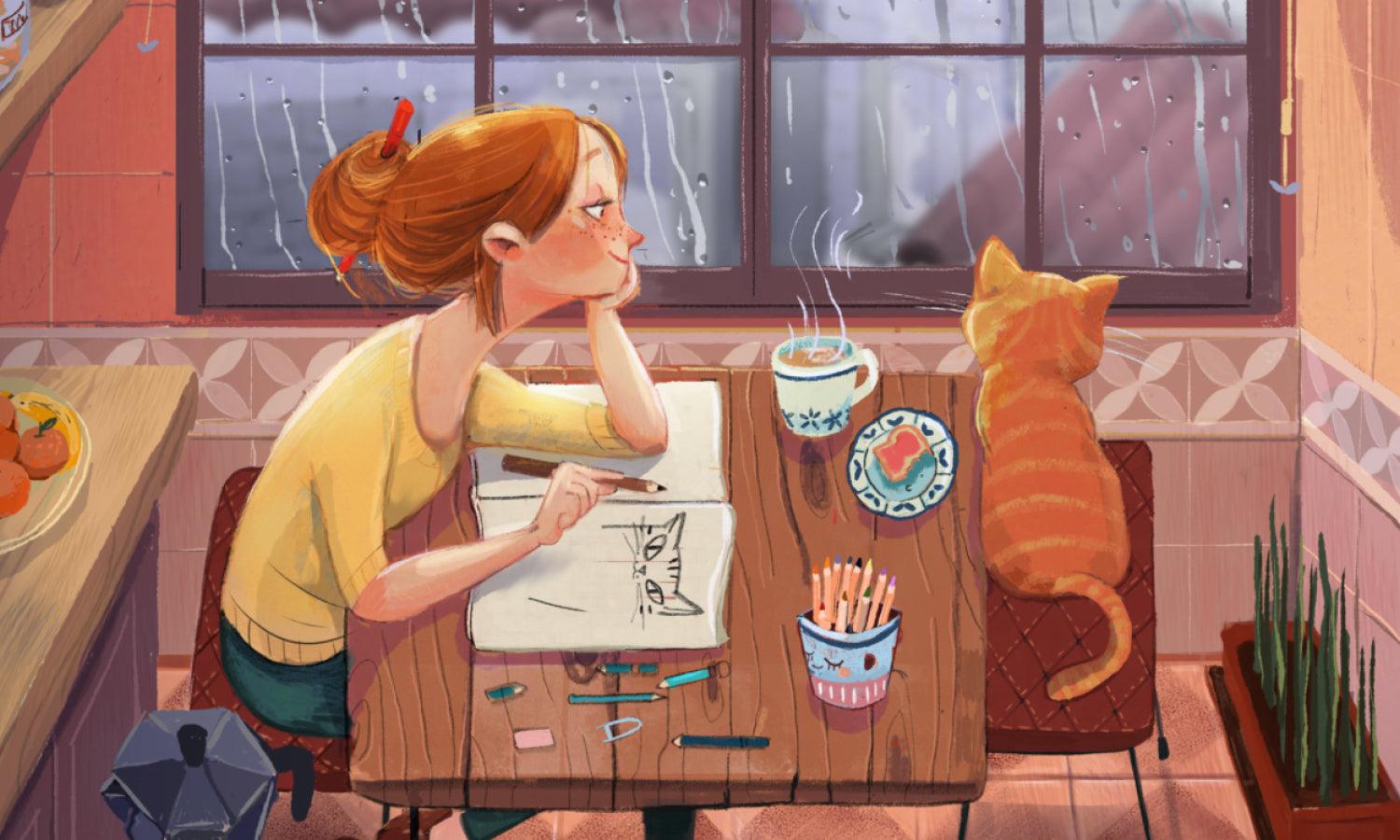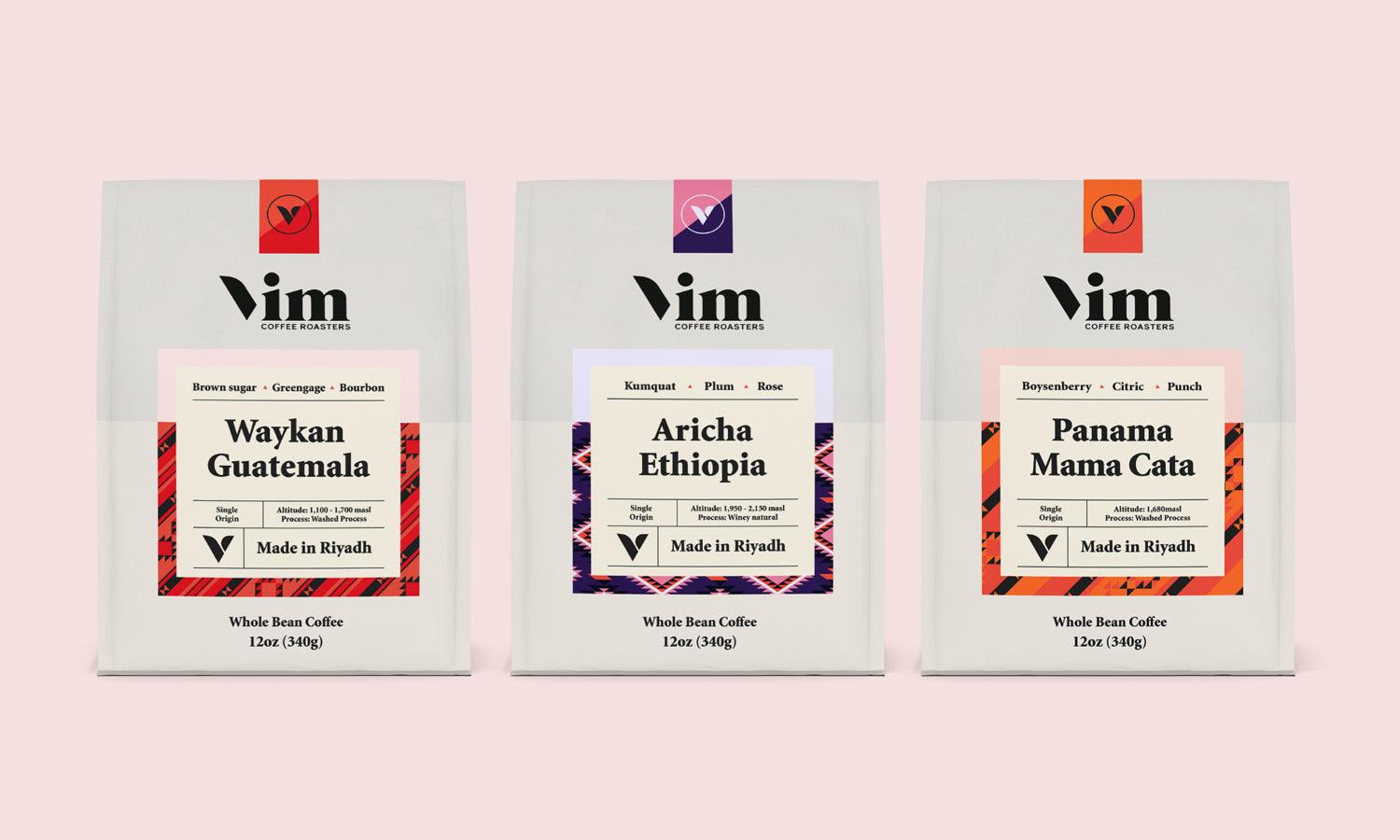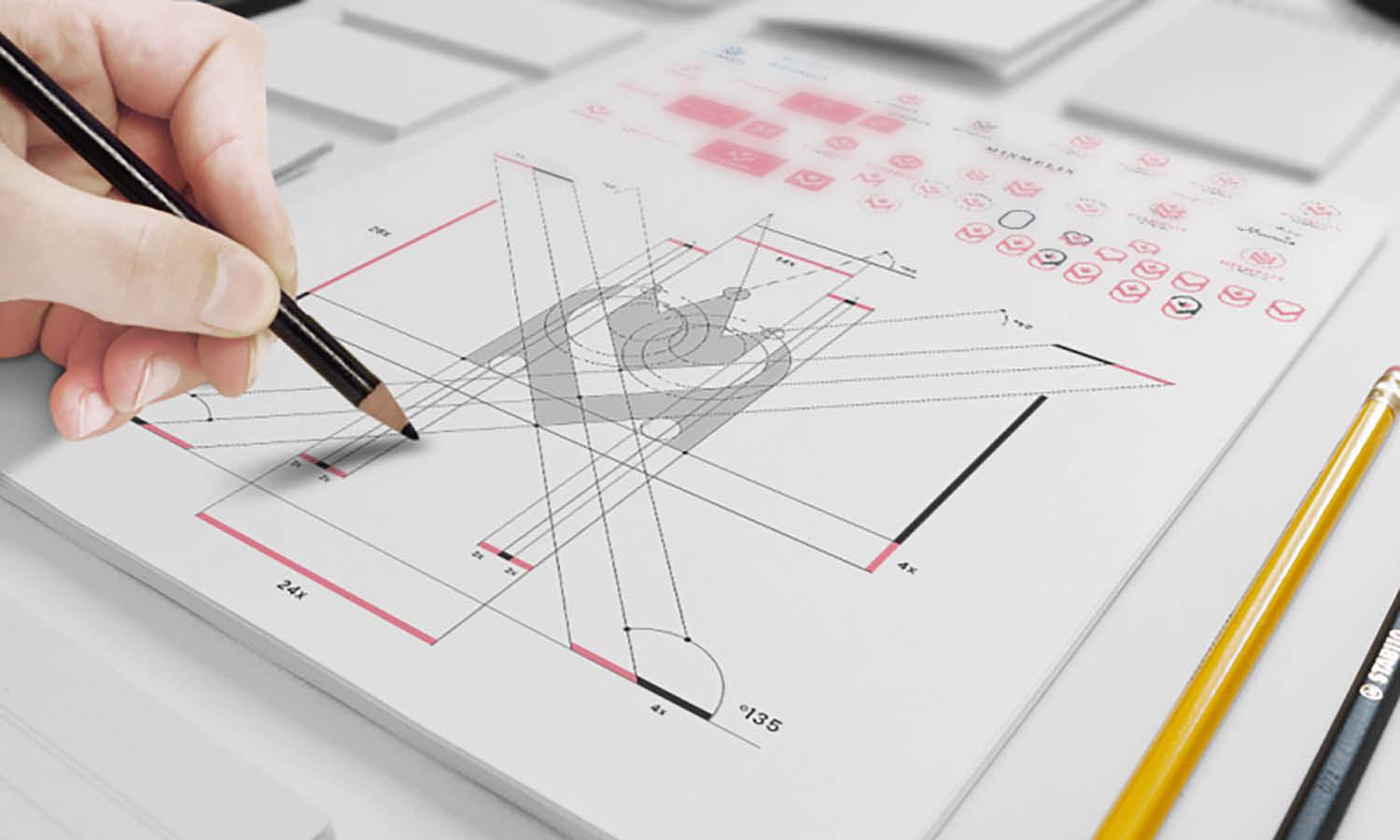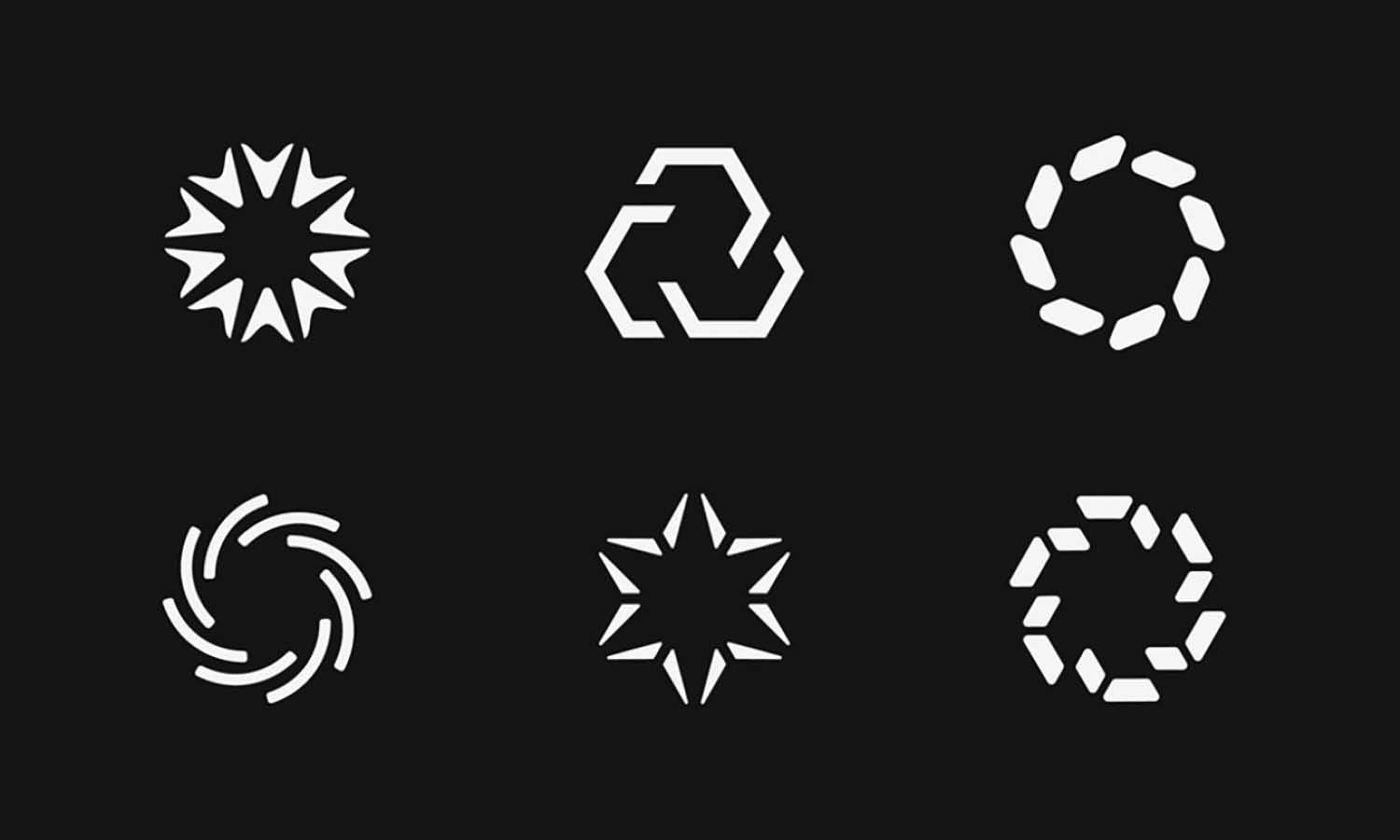Leading in Typography: Design Tips & Guide

Source: Mattheus Mendes, Lettering Collection, Behance, https://www.behance.net/gallery/122443931/Lettering-Collection
Typography is one of the most essential elements in visual communication. Whether you're designing a website, crafting a brand identity, or working on editorial layouts, typography plays a foundational role in how your message is delivered and perceived. Good typography enhances readability, creates visual interest, and helps establish a strong tone and personality for your design.
Understanding typography goes beyond picking a nice-looking font. It involves mastering the use of typefaces, line spacing, alignment, hierarchy, and consistency to guide the viewer’s eye and support the content’s message. When used skillfully, typography can elevate a simple message into a memorable experience.
Typography also influences how people emotionally connect with a design. The right combination of font style, weight, and size can create trust, urgency, elegance, or energy—depending on the intent of the piece. Designers who invest in learning typography principles are better equipped to produce work that is not only visually appealing but also functionally effective.
This guide will cover key tips and best practices to help you lead with confidence in your typography choices. From technical adjustments to stylistic strategies, every point is crafted to enhance your understanding and execution of great type design.
Understand The Basics Of Leading
Leading, one of the foundational elements in typography, refers to the vertical spacing between lines of text. The term has its origins in the early days of printing, where strips of lead were used to physically separate lines of type. In modern design, leading is measured from the baseline of one line of text to the baseline of the line directly above or below it. This simple yet powerful tool influences the legibility, aesthetic appeal, and structure of your design.
When applied effectively, leading ensures a smooth reading experience by preventing lines of text from feeling too crowded or too disconnected. The right amount of leading varies depending on several factors, including font size, typeface design, and the content’s purpose. For instance, text-heavy documents typically benefit from generous leading to enhance readability, while display text can afford more creative spacing to achieve visual impact.
Additionally, leading works in tandem with other typographic elements, such as line length and letter spacing, to create a cohesive and polished layout. Understanding leading’s role in typography helps designers maintain balance and clarity, whether crafting digital interfaces or print materials. By mastering the basics of leading, you can transform text into an engaging and aesthetically pleasing element that draws readers in and communicates effectively.
Match Leading To Font Size
The relationship between leading and font size is one of the most critical aspects of achieving harmonious typography. As font size determines the overall scale of the text, leading must complement it to ensure both readability and visual appeal. A common guideline for setting leading is to use a value between 120% and 145% of the font size. For instance, if your font size is 12 points, a leading value of 14.4 to 17.4 points typically works well.
However, this relationship is not rigid and must adapt to specific contexts. Smaller font sizes often require proportionally more leading because tighter spacing can make lines blur together, making the text difficult to read. Conversely, larger font sizes, such as those used in headlines or titles, can benefit from tighter leading to create a bold, impactful appearance without excessive gaps.
When adjusting leading, consider the typeface’s characteristics, such as its x-height and line density. Typefaces with taller x-heights or intricate letterforms might require more leading to maintain clarity and prevent visual clutter. Always test your leading choices in real-world scenarios, such as print proofs or responsive digital displays, to ensure the text looks as intended across mediums.
Consider The Typeface’s X-Height
In typography, a typeface’s x-height—the height of the lowercase “x” relative to its ascenders and descenders—is a critical factor in determining how leading should be applied. The x-height influences the overall perception of text size and spacing, which directly impacts legibility and aesthetics.
Typefaces with larger x-heights often appear more prominent and dense, requiring additional leading to maintain clarity and prevent lines from feeling cramped. For instance, sans-serif typefaces like Helvetica and Arial typically have larger x-heights, and increasing leading ensures better readability. On the other hand, typefaces with smaller x-heights may need less leading because their proportions naturally create more breathing space between lines.
When adjusting leading based on x-height, consider the content’s purpose and the medium. In dense blocks of body text, larger x-heights paired with sufficient leading reduce visual strain and guide the reader’s eye smoothly across lines. For display text, where creative and dramatic effects are often desired, you may experiment with tighter leading, provided the text remains legible.

Source: Pouya A. Through A Glass Darkly Identity, Behance, https://www.behance.net/gallery/68552793/Through-A-Glass-Darkly-Identity
Optimize For Readability
Readability is the cornerstone of effective typography, and leading plays a pivotal role in achieving it. Proper leading ensures that the text is easy to read, reducing eye strain and helping the audience engage with the content more comfortably. Whether designing for print or digital mediums, optimizing leading for readability is a crucial aspect of typographic design.
To enhance readability, consider the balance between leading and line length. Longer lines of text require increased leading to create clear separation between lines, preventing the reader from losing their place. For shorter lines, slightly reduced leading can maintain cohesiveness without causing visual clutter.
The typeface’s design also impacts readability. Typefaces with intricate details, tight spacing, or unique proportions often benefit from increased leading to maintain clarity. Similarly, content intended for extended reading, such as books or articles, demands generous leading to provide a smooth and natural reading flow.
Another factor to consider is the medium. Text displayed on screens, especially smaller devices, often requires more leading than printed text to compensate for differences in resolution and contrast. Responsive design adjustments ensure readability across various screen sizes.
Ultimately, readability should be prioritized over purely aesthetic considerations. While creative typography can be visually striking, it should never compromise the audience’s ability to process the information. Thoughtful use of leading creates a balance between form and function, elevating the overall reading experience and ensuring that your design effectively communicates its message.
Experiment With Display Text
Display text offers a unique opportunity for creativity in typography. Unlike body text, which prioritizes readability, display text is designed to make an impact, grab attention, and convey a specific mood or tone. Leading plays a critical role in this, as the spacing between lines can drastically alter the visual dynamics and emotional resonance of the text.
In display typography, you can experiment with tight leading to create a bold, dramatic effect. For instance, overlapping or closely spaced lines can evoke a sense of urgency or intensity, making the text feel cohesive and striking. Alternatively, exaggerated leading can add a sense of elegance, spaciousness, or modernity, especially when combined with minimalist layouts.
When experimenting with leading in display text, consider the typeface’s characteristics and the context in which the design will appear. Serif typefaces, for example, may benefit from looser leading to emphasize their ornate details, while sans-serif typefaces might handle tighter spacing well, enhancing their clean, streamlined look.
Always test how your leading choices interact with other design elements, such as images, colors, and layout. The goal is to ensure that the display text stands out without sacrificing harmony within the overall composition. Thoughtful experimentation with leading in display text allows you to craft visually compelling designs that captivate and communicate effectively.
Adjust Leading For Content Type
Different types of content require tailored approaches to leading in typography to suit their specific purposes and audiences. Leading directly influences how information is perceived, guiding the reader’s experience and ensuring clarity.
For body text, which typically involves extended reading, prioritize functionality. Generous leading creates a natural flow, reducing eye strain and making lengthy content easier to digest. This approach is ideal for books, articles, and reports, where the primary goal is to maintain the reader’s focus over time.
For headings, subheadings, and titles, leading can be adjusted to emphasize hierarchy and impact. Tighter leading often works well for bold, attention-grabbing headings, while looser leading can add sophistication and prominence to larger titles. Striking the right balance helps these elements stand out while complementing the surrounding text.
Specialized content, such as technical manuals or academic papers, benefits from precise leading adjustments. Here, readability and structure are paramount, and uniform spacing ensures that complex information is communicated clearly. Conversely, artistic or creative layouts, such as magazine spreads or advertisements, provide more flexibility. Leading can be used dynamically to enhance visual appeal and reinforce the design’s theme.
Avoid Too Tight Leading
Tight leading—when the vertical space between lines of text is minimal—can severely hinder readability and compromise the overall aesthetic of your design. While close line spacing may seem like a way to save space or create a bold effect, it often results in a cluttered, overwhelming appearance. Text with tight leading forces readers to work harder to distinguish individual lines, leading to visual fatigue and disengagement.
One significant issue with tight leading is the risk of ascenders and descenders overlapping. These features are the tallest and lowest parts of letters, respectively, and when they collide, they create visual noise that disrupts the flow of reading. This problem is especially prevalent in typefaces with tall x-heights or exaggerated letterforms.
Tight leading can also diminish the natural rhythm of reading. Proper spacing allows the eye to move smoothly from one line to the next, while insufficient space interrupts this flow, making the text feel dense and uninviting.
To avoid tight leading, consider the typeface, font size, and content length. Fonts with intricate details or compact proportions often require more breathing room to remain legible. Testing your design across various formats, such as print and digital, ensures your leading choices work effectively in real-world applications.

Source: Giuseppe Salerno, Norman Stencil, Behance, https://www.behance.net/gallery/116594429/NORMAN-STENCIL
Beware Of Excessive Leading
Excessive leading—when the vertical space between lines of text is overly generous—can disrupt the balance and readability of your design. While adequate spacing is essential for clarity, too much space creates a disconnected and fragmented reading experience, diminishing the text’s cohesiveness and visual impact.
One of the main drawbacks of excessive leading is the strain it places on the reader’s eye movement. The increased distance between lines forces readers to make larger jumps from one line to the next, which can lead to a disjointed reading flow. This issue is especially problematic in body text, where continuity is key to maintaining engagement.
Excessive leading can also dilute the visual unity of your layout. Text with too much space between lines often appears floating or isolated, detracting from the overall composition. This imbalance is particularly noticeable in compact designs, where excessive white space disrupts harmony and wastes valuable layout real estate.
To prevent excessive leading, carefully evaluate your text’s purpose and context. Body text typically benefits from moderate leading to enhance readability without creating unnecessary gaps. Display text, on the other hand, may allow for looser leading to achieve an airy, elegant effect, provided it remains legible.
Test Leading Across Devices
Each device presents unique challenges, including variations in screen size, resolution, and rendering capabilities. As a designer, adapting your leading to accommodate these differences ensures that your text looks polished and performs well across all formats. Mobile devices, for example, often require increased leading compared to desktop layouts.
Smaller screens and tighter line lengths make it necessary to create more breathing space between lines, improving readability for users who view content on the go. Conversely, larger screens with ample space may allow for tighter leading without sacrificing clarity.
Testing your leading on various devices and resolutions is especially important for responsive design. Text that appears balanced on a desktop may feel cramped or overly spaced on a mobile device. Tools like responsive design simulators and live device testing can help you identify and address such issues early in the design process.
Consider how different environments, such as low-light settings or glare-prone screens, affect readability. Adjusting leading dynamically based on user context, when possible, can significantly enhance the reading experience.
Leverage White Space
White space, or negative space, is a powerful design tool that enhances the impact and readability of your typography. Properly balanced leading contributes to white space by creating an inviting, open layout that draws attention to the content while reducing visual clutter.
Effective use of white space helps guide the reader’s eye through the text. When leading is thoughtfully applied, it adds breathing room between lines, making the text feel less dense and overwhelming. This is particularly important for content-heavy designs, such as reports, articles, or long-form digital layouts, where readability is a priority.
In minimalist designs, leveraging white space with adequate leading creates a clean, modern aesthetic. Loose leading can emphasize elegance and simplicity, while still maintaining balance within the composition. However, it’s important not to overuse white space, as excessive gaps can fragment the text and disrupt its flow.
White space also plays a role in visual hierarchy, helping to distinguish between sections of content. Strategic leading adjustments can define headings, subheadings, and body text, making the overall structure more intuitive and easier to navigate.
Conclusion
Mastering leading in typography is essential for creating visually appealing and functional designs. Properly adjusted leading enhances readability, establishes hierarchy, and ensures that your text communicates effectively across various mediums. Whether you’re working on body text, display text, or creative layouts, thoughtful leading choices bring harmony and balance to your typography. By understanding factors such as font size, x-height, and content type, and by testing your designs across devices, you can refine your skills and produce professional results. Leading is more than just spacing—it’s a design tool that transforms text into a powerful and engaging visual element.
Let Us Know What You Think!
Every information you read here are written and curated by Kreafolk's team, carefully pieced together with our creative community in mind. Did you enjoy our contents? Leave a comment below and share your thoughts. Cheers to more creative articles and inspirations!
















Leave a Comment